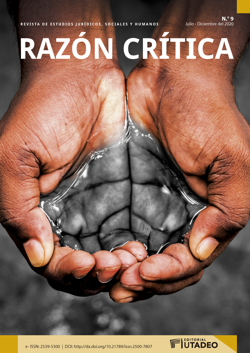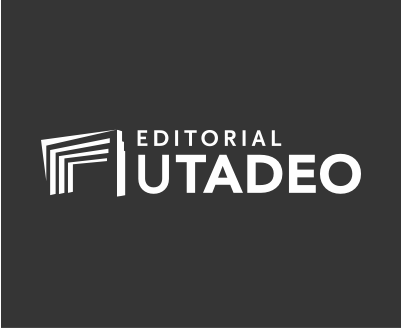Esta obra está bajo una licencia internacional Creative Commons Atribución-NoComercial-CompartirIgual 4.0.
Resumen
La securitización, como enfoque teórico, permite comprender las dinámicas que se producen cuando un asunto se considera un tema de seguridad. No obstante, cuando la religión se aborda como objeto referente, produce una dinámica tanto ofensiva como defensiva para responder a la amenaza. En este sentido, se analiza cómo el Estado Islámico realiza un proceso de securitización de la religión que se fundamenta en principios teológicos, y bajo el cual enmarca sus objetivos, legitima sus acciones, define al enemigo y controla a la población. De esta manera, se acude al concepto de “ramas de la securitización” para comprender las diferentes audiencias a las que dirige su discurso salafista.
Citas
al-Adnani, A. M. (2012, noviembre 1). Stormings Are More Painful (Al-Furqan Media). Consultado el 13 de febrero de 2017. https://www.yumpu.com/en/document/read/28360969/shaykh-abc5ab-mue1b8a5ammad-al-adnc481nc4ab-22the-incursions-are-deadlier22-en
al-Adnani, A. M. (2014, junio 29). This is the Promise of Allah. Consultado el 28 de noviembre de 2016. https://www.yumpu.com/en/document/read/52152130/shaykh-abc5ab-mue1b8a5ammad-al-e28098adnc481nc4ab-al-shc481mc4ab-22this-is-the-promise-of-god22-en
al-Baghdadi, A. B. (2014a, julio 1). Message To the Mujāhidīn and the Islamic Ummah In the Month Of Ramaḍān (Al-Hayat Media Center). Consultado el 21 de diciembre de 2015. https://jihadology.net/2014/07/01/al-furqan-media-presents-a-new-audio-message-from-the-islamic-states-abu-bakr-al-%e1%b8%a5ussayni-al-qurayshi-al-baghdadi-message-to-the-mujahidin-and-the-islamic-ummah-in-the-month-of-rama/
al-Baghdadi, A. B. (2014b, enero 19). Translation of the new audio-message by Abū Bakr al-Baghdādī (Al-Hayat Media Center). Consultado el 25 de agosto de 2019. https://scholarship.tricolib.brynmawr.edu/bitstream/handle/10066/16409/ABB20140119.pdf
al-Tamimi, A. J. (2017, julio 18). Islamic State Treatise: Ruling of Shari'a on the Shi'a Sects [Entrada de blog]. Aymenn Jawad Al-Tamimi. Consultado el 20 julio de 2017. http://www.aymennjawad.org/20083/islamic-state-treatise-ruling-of-Sharia-on
al-Zarqawi, A. M. (2004, febrero). Zarqawi Letter. English translation of terrorist Musab al Zarqawi letter obtained by United States Government in Iraq. U.S. Department of State. Consultado el 13 de enero de 2017. https://2001-2009.state.gov/p/nea/rls/31694.htm#
Ayoob, M. (2004). Political Islam: Image and Reality. World Policy Journal, 21(3), 1-14. https://doi.org/10.1215/07402775-2004-4011
Balzacq, T., Léonard, S. y Ruzicka, J. (2015). “Securitization” revisited: Theory and cases. International Relations, 30(4), 484-531. https://doi.org/10.1177/0047117815596590
Buzan, B. (2007). People, States and Fear: an agenda for the international security studies in the post-cold war era. Colchester: ECPR press.
Buzan, B. y Hansen, L. (2010). The Evolution of International Security Studies. Cambridge: Cambridge University Press.
Buzan, B., Waever, O. y Wilde, J. de. (1998). Security: A Framework for the Analysis. London: Lynne Reinner Publishers.
Esposito, J. L. (ed.). (2003). Oxford Dictionary of Islam. Oxford: Oxford University Press. http://www.oxfordislamicstudies.com/browse?type=article
Estado Islámico. (2014a). The revival of slavery before the hour. Dabiq, 4, 14-18. Consultado el 4 de marzo de 2015. https://www.ieproject.org/projects/dabiq4.pdf
Estado Islámico. (2014b, julio 28). Upon the Prophetic Methodology (al-Furqān Media). Consultado el 22 de enero de 2016. https://jihadology.net/2014/07/28/al-furqan-media-presents-a-new-video-message-from-the-islamic-state-upon-the-prophetic-methodology/
Fernandez, A. M. (2015). Here to Stay and Growing: Combating ISIS propaganda network. The Brookings Project on U.S. Relations with the Islamic World. Washington: Center for the Middle East Policy at The Brookings Institution. Consultado el 25 de diciembre de 2015. https://www.brookings.edu/wp-content/uploads/2016/06/IS-Propaganda_Web_English.pdf
Gartenstein-Ross, D., Fritz, J., Moreng, B. y Barr, N. (2015). Islamic State Vs Al-Qaeda. Strategic Dimensions of a Patricidal Conflict. New America. International Security Program. Consultado el 14 de diciembre de 2015. https://static.newamerica.org/attachments/12103-islamic-state-vs-al-qaeda/ISISvAQ_Final.e68fdd22a90e49c4af1d4cd0dc9e3651.pdf
Human Rights Watch. (2013). “No One Left”. Summary Executions by Syrian Forces in al-Bayda and Baniyas. Recuperado el 25 de octubre de 2015, de https://www.hrw.org/report/2013/09/13/no-ones-left/summary-executions-syrian-forces-al-bayda-and-baniyas
Izquierdo Brichs, F. (ed.). (2013). El islam político en el Mediterráneo. Barcelona: CIDOB, Centro de Información y Documentación de Barcelona.
Kfir, I. (2015). Social Identity Group and Human (In)Security: The Case of Islamic State in Iraq and the Levant (ISIL). Studies in Conflict y Terrorism, 38(4), 233-252. https://doi.org/10.1080/1057610X.2014.997510
Landis, J. (2013, diciembre 15). Zahran Alloush: His Ideology and Beliefs [Entrada de blog]. Syria Comment. Syrian Politics, History, and Religion. Consultado el 13 de enero de 2016. http://www.joshualandis.com/blog/zahran-alloush/
Laustsen, C. B. y Waever, O. (2003). In Defense of Religion. Sacred referent objects for securitization. En F. Petito y P. Hatzopoulos (eds.), Religion in International Relations. The return de exile (pp. 147-180). New York: Palgrave Macmillan. https://doi.org/10.1057/9781403982360_6
Lewis, J. D. (2013). Al-Qaeda in Iraq Resurgent. The breaking the walls campaing, Part I. Middle East Security Report N°14. Washington: Institute for the Study of War. Consultado el 9 de noviembre de 2016. http://www.understandingwar.org/sites/default/files/AQI-Resurgent-10Sept_0.pdf
Lister, C. R. (2015). The Syrian Jihad. Oxford: Oxford University Press.
Maher, S. (2017). Salafi-Jihadism: the history of an idea. Londres: Penguin Books.
Martin, C. y Barzegar, A. (eds.). (2010). Islamism: Contested Perspectives on Political Islam. Stanford: Stanford University Press.
McCants, W. (2015). The ISIS Apocalypse. The History, Strategy, and Doomsday Vision of the Islamic State. New York: Saint Martin's Press.
McDonald, M. (2008). Securitization and the Construction of Security. European Journal of International Relations, 14(4), 563-587. https://doi.org/10.1177/1354066108097553
McSweeney, B. (1996). Identity and Security: Buzan and the Copenhagen School. Review of International Studies, 22(1), 81-93. https://doi.org/10.1017/S0260210500118467
Meijer, R. (2010). Salafism: Doctrine, Diversity and Practice. En K. Hroud (ed.), Political Islam. Context versus Ideology (pp. 37-60). Londres: SAQI & London Middle East Intitute SOAS.
Ospina Morales, G. (2019). Religión e identidad. La amenaza del Estado Islámico en Irak y Siria. Desafíos, 31(1), 193-235. https://doi.org/10.12804/revistas.urosario.edu.co/desafios/a.6206
Saeed, H. (2015). The Islamic State in Iraq and Al-Sham in Iraq: Integrating the Sunni Policy in the Salafist Ideology. En Friedrich Ebert Stiftung, The Rise of Religious Radicalism in the Arab World: Significance, Implications and Counter-Strategies (pp. 67-85). Amman: FES Jordan e Iraq. Consultado el 9 de enero de 2016. http://library.fes.de/pdf-files/bueros/amman/11463.pdf
Saleh, A. (2010). Broadening the Concept of Security: Identity and Societal Security. Geopolitics Quaterly, 6(4), 228-241.
Sheikh, M. K. (2014a). Doctrinal War. E-International Relations. Consultado el 15 de noviembre de 2016. http://www.e-ir.info/2014/01/15/doctrinal-war/
Sheikh, M. K. (2014b). The Religious Challenge to Securitisation Theory. Millenium: Journal of International Studies, 43(1), 252-272. https://doi.org/10.1177/0305829814540853
Stern, J. y Berger, J. (2015). ISIS, The State of Terror. London: William Collins.
Veiga, F. (2009). El Desequilibrio como Orden: una historia de la posguerra fría 1990-2008. Madrid: Alianza Editores.
Vuori, J. (2008). Illocutionary Logic and Strands of Securitization: Applying the Theory of Securitization to the Study of Non-Democratic Political Orders. European Journal of International Relations, 14(1), 65-99. https://doi.org/10.1177/1354066107087767
Wagemakers, J. (2017). Revisiting Wiktorowicz. Categorising and Defining the Branches of Salafism. En F. Cavatorta y F. Merone (eds.), Salafism After the Arab Awakening: Contending with People's Power (pp. 7-24). Oxford: Oxford Scholarship Online. doi:10.1093/acprof:oso/9780190274993.003.0002
Weiss, M. y Hassan, H. (2015). ISIS, Inside the Army of Terror. Nueva York: Regan Arts.
Wiktorowicz, Q. (2006). Anatomy of the Salafi Movement. Studies in Conflict & Terrorism, 29(3), 207-239. https://doi.org/10.1080/10576100500497004
Zelin, A. Y. (2016). The Islamic State’s Territorial Methodology. Research Notes 29, The Washington Institute for Near East Policy. Consultado el 1 de mayo de 2016. http://www.washingtoninstitute.org/policy-analysis/view/the-islamic-states-territorial-methodology

 PDF
PDF
 FLIP
FLIP
 XML
XML












